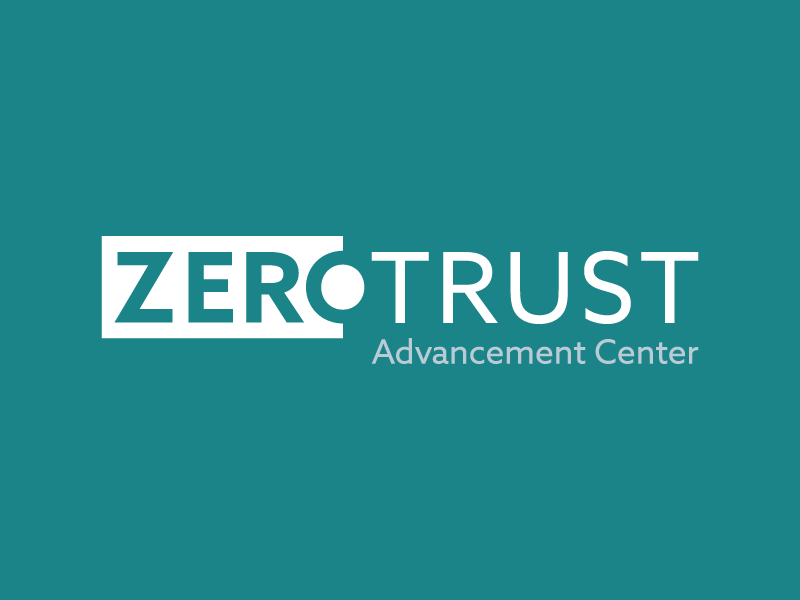Exploring the Intersection of IAM and Generative AI in the Cloud
Blog Article Published: 09/15/2023
Written by Ken Huang, CEO of DistributedApps.ai and VP of Research at CSA GCR.
As generative AI (GenAI) becomes more prevalent, new challenges are emerging around identity and access management (IAM) within cloud environments. In this post, we explore the intersection of IAM and GenAI, how IAM enables and secures GenAI deployments in the cloud, and how GenAI capabilities like deepfakes reciprocally create new IAM concerns. By examining this crossover space, we'll see how IAM and GenAI mutually influence each other, and understand the new security considerations that arise when combining these technologies in the cloud. With IAM and GenAI adoption both accelerating, it's important to dive into their interplay and plan for their joint impact on cloud platforms.
IAM's Impact on GenAI and GenAI Infrastructure
Identity and Access Management (IAM) plays an indispensable role in shaping the security landscape of Generative AI (GenAI) and its associated infrastructure, particularly in cloud environments. This significance stems from the unique complexities and sensitivities associated with GenAI models, which often require vast amounts of data and computational power. The impact of IAM on GenAI and its infrastructure can be dissected into several key areas: data security, model security, and infrastructure security, each catering to different types of users and access needs.
Data Security
GenAI models are data hungry by nature, often requiring access to large and diverse datasets for training. The sensitivity of these datasets can vary, but it often includes confidential or proprietary information especially for the models used in the enterprise environment. IAM plays a critical role in ensuring that only authorized personnel, such as data scientists and selected developers, have the necessary access to these datasets. It provides the first layer of defense in protecting the raw material that feeds into GenAI models. IAM policies can enforce data encryption and secure data transfer protocols, further fortifying data security.
Model Security
Once trained, GenAI models themselves become valuable intellectual property, and unauthorized access to these models could result in significant losses. IAM governs who can access, deploy, and modify these trained models. For example, a machine learning engineer might have permission to tweak a model's parameters but may not have the rights to deploy the model into a production environment. Conversely, a DevOps engineer might have deployment rights but not the ability to modify the model itself. IAM ensures that these roles are clearly defined and enforced, minimizing the risk of unauthorized or unintentional model alterations.
Infrastructure Security
GenAI models, especially those of considerable complexity, require high powered computational resources for both training and inference. These resources are often provisioned in the cloud and can include clusters of GPUs or TPUs. Unauthorized access to this computational infrastructure could not only result in financial losses but also pose significant security risks. IAM controls who can spin up new instances, allocate resources, or initiate costly training runs on these GPUs. This aspect of IAM is especially crucial when multiple departments within an organization are sharing a cloud based computational environment. Through fine grained access controls, IAM ensures that resources are used efficiently and securely.
User Roles and Their Impact
The effectiveness of IAM in securing GenAI and its infrastructure is also closely tied to the different roles of individuals interacting with the system:
- Data Scientists: Typically require extensive access to data but not necessarily to the deployment environment.
- Machine Learning Engineers: Need permissions that allow them to train, validate, and possibly deploy models but not full administrative access to all resources.
- DevOps Engineers: Require access to deployment pipelines and monitoring tools but not to the raw data used for training models.
- Cyber Security Teams: Need broad monitoring capabilities to oversee the security of data, models, and infrastructure without directly interacting with the data or models.
- Business Analysts and Decision Makers: May need read only access to model outputs and data analytics but not to the model parameters or training data.
- Compliance and Governance Officers: Need access to logs, historical data, and compliance reports for auditing and regulatory purposes but not to the operational aspects of the models or data.
IAM policies need to be meticulously crafted to cater to these varied roles, ensuring that each role has the minimum required access to perform their tasks effectively without compromising on security. In this sense, IAM not only protects the GenAI models and their associated infrastructure but also serves as an enabler that allows multiple stakeholders to collaborate securely and efficiently in developing and deploying GenAI solutions.
How GenAI Impacts IAM in the Cloud
Integrating GenAI capabilities into IAM can help address emerging threats and security gaps. By analyzing user behavior patterns and adding anomaly detection, GenAI has the potential to significantly enhance multi-factor authentication, access control policies, and responses to new spoofing techniques like deepfakes. As we will explore, augmenting IAM with generative AI can add important new layers of dynamism, complexity, and context-awareness - strengthening identity and access governance as threats continue to evolve.
Authentication and Multi Factor Authentication (MFA)
Traditional MFA methods rely on static rules and pre-defined conditions to trigger additional authentication steps. In contrast, a GenAI-augmented MFA system can dynamically analyze real-time user behavior to make more context-aware decisions.
The use of GenAI in this context goes beyond merely adding more hurdles for authentication. It makes the MFA process more dynamic and tailored to individual user behavior, thereby making it more difficult for unauthorized users to gain access even if they have some of the required authentication factors. It shifts the MFA system from being rule-based to being behavior-based, adding a layer of complexity that is hard for malicious actors to navigate.
Deepfakes: A New Threat Vector
Traditional IAM systems are typically not equipped to identify or counteract deepfakes. These systems are designed to authenticate identity based on pre-defined metrics and do not have the capability to discern the subtle anomalies that distinguish a deepfake from genuine content. This gap in the IAM security architecture is particularly concerning given the increasing reliance on cloud-based systems, which are often targeted by sophisticated cyber-attacks, including those involving deepfakes.
To address this emerging threat, IAM systems themselves may need to incorporate GenAI capabilities trained to detect deepfakes. Just as GenAI algorithms can be trained to create deepfakes, they can also be trained to identify them. These algorithms would analyze the minutiae of audio, video, or text to determine whether it aligns with known characteristics of genuine content. For example, a GenAI model trained to detect deepfake videos might analyze facial expressions, eye movements, and other subtle physiological signals that are difficult to replicate convincingly in a deepfake.
This approach to combating deepfakes could be integrated into a multi-layered authentication process, adding an additional verification step when anomalies are detected. For instance, if a facial recognition system flagged potential deepfake usage, it could then trigger a secondary authentication method, such as a one-time password (OTP) sent to a trusted device, before allowing access.
Attribute Based and Fine Grained Access Control
One of the most intriguing applications of GenAI in IAM is in automated policy generation, especially for Attribute Based Access Control (ABAC). GenAI can analyze typical access patterns, roles, and attributes to generate fine grained IAM policies.
Example AWS IAM Policy
{
"Version": "2012-10-17",
"Statement": [
{
"Sid": "FinanceDeptPolicy",
"Effect": "Allow",
"Action": [
"s3:GetObject"
],
"Resource": "arn:aws:s3:::Finance-Reports/*",
"Condition": {
"StringEquals": {
"aws:RequestTag/department": "Finance"
}
}
}
]
}This policy could be automatically generated by a GenAI model to give access to users in the Finance department to a specific AWS S3 bucket.
The Future: Governance and Human Oversight
Human oversight serves as a crucial counterbalance to the automated IAM decisions made by GenAI models. While these models can analyze vast amounts of data and make real-time decisions, they lack the nuanced understanding of context and ethical considerations that human experts bring to the table. For example, while a GenAI model might effectively detect and flag anomalous behavior in access logs, it may not be equipped to understand the broader implications of such anomalies or the appropriate course of action that aligns with the organization's ethical standards.
Governance models that define the use of GenAI in IAM must be anchored in well-established security principles, such as the zero trust architecture. Zero trust principles dictate that trust must be continuously earned and verified, rather than assumed. This applies not only to human users but also to the GenAI models that interact with various elements of an IAM system. For example, the decisions made by a GenAI model to grant or restrict access must be continuously validated against predefined security policies and real-time contextual information.
Furthermore, robust compliance and auditing mechanisms must underpin any governance model. These mechanisms should be designed to provide transparency into both the decisions made by GenAI models and the administrative actions taken by human operators. Detailed logs should be maintained, and regular audits should be conducted to ensure that the system adheres to both internal policies and external regulatory requirements. This also provides the necessary documentation to validate the system's actions in retrospect, which is crucial for accountability and for refining the system's future behavior.
Conclusion
The intersection of IAM and Generative AI in the cloud is a burgeoning field full of possibilities and challenges. From influencing how GenAI models are trained and deployed to revolutionizing the IAM landscape with automated policy generation and enhanced security measures, this confluence is shaping the future of cloud security. However, as we integrate these powerful technologies, we must also be vigilant against emerging threats like deepfakes and consider the nuanced roles of different user types in this ecosystem.
As we forge ahead, this integration promises a future where robust security mechanisms and groundbreaking AI capabilities mutually reinforce each other, offering a more secure and efficient cloud environment for all.
About the Author
Ken Huang is the CEO of DistributedApps.ai, a firm specializing in GenAI training and consulting. He's also a key contributor to OWASP's Top 10 for LLM Applications and spoke at the CSA AI Summit in 2023 on GenAI security. As the VP of Research for CSA GCR, he advised the newly formed CSA GCR’s AI Working Group. A regular judge for AI and blockchain startup contests, Ken has also spoken at high-profile conferences like Davos WEF, IEEE and ACM. He co-authored the acclaimed book "Blockchain and Web3" and has another book, "Beyond AI," slated for a 2024 release by Springer. Ken's expertise and leadership make him a recognized authority on GenAI security.
Related Resources



Trending This Week
#1 The 5 SOC 2 Trust Services Criteria Explained
#2 What You Need to Know About the Daixin Team Ransomware Group
#3 Mitigating Security Risks in Retrieval Augmented Generation (RAG) LLM Applications
#4 Cybersecurity 101: 10 Types of Cyber Attacks to Know
#5 Detecting and Mitigating NTLM Relay Attacks Targeting Microsoft Domain Controllers
Related Articles:
Considerations When Including AI Implementations in Penetration Testing
Published: 04/30/2024
The Future of Cloud Cybersecurity
Published: 04/29/2024
CPPA AI Rules Cast Wide Net for Automated Decisionmaking Regulation
Published: 04/26/2024
Upselling Cybersecurity: Why Baseline Security Features Shouldn’t Be a Commodity
Published: 04/24/2024






